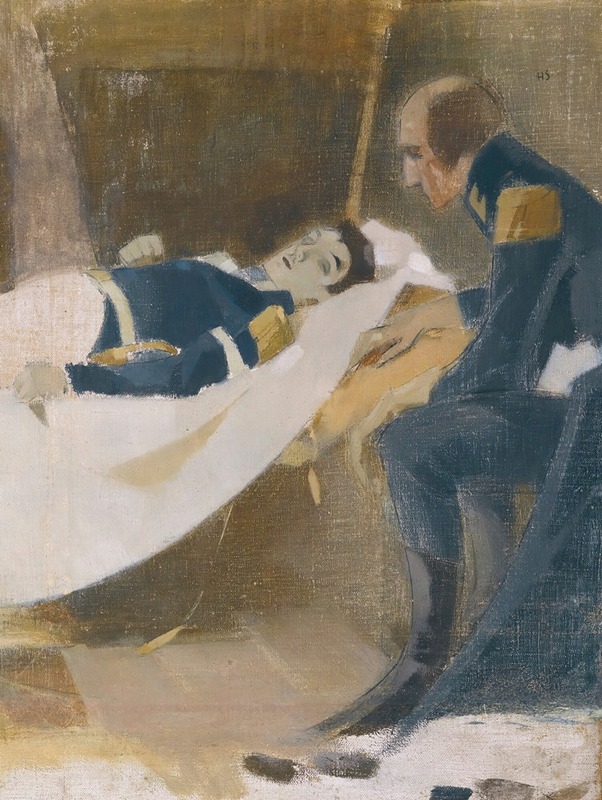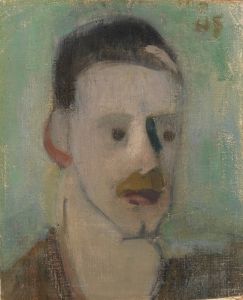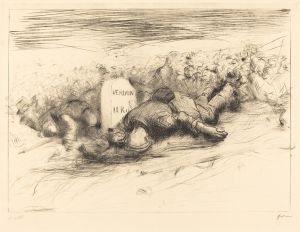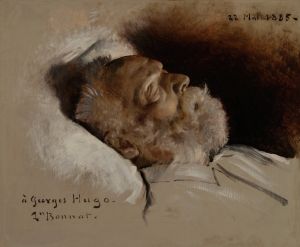
The death of Wilhelm von Schwerin
A hand-painted replica of Helene Schjerfbeck’s masterpiece The death of Wilhelm von Schwerin, meticulously crafted by professional artists to capture the true essence of the original. Each piece is created with museum-quality canvas and rare mineral pigments, carefully painted by experienced artists with delicate brushstrokes and rich, layered colors to perfectly recreate the texture of the original artwork. Unlike machine-printed reproductions, this hand-painted version brings the painting to life, infused with the artist’s emotions and skill in every stroke. Whether for personal collection or home decoration, it instantly elevates the artistic atmosphere of any space.
Helene Schjerfbeck's painting The Death of Wilhelm von Schwerin is a significant work by the Finnish artist, created in 1886. The painting depicts the death of Wilhelm von Schwerin, a young Swedish lieutenant who fought and died during the Finnish War (1808–1809), a conflict between Sweden and Russia that ultimately led to Finland becoming an autonomous Grand Duchy under Russian control. The subject of the painting is drawn from historical events, as von Schwerin is remembered as a symbol of youthful heroism and sacrifice.
Schjerfbeck's portrayal of von Schwerin is notable for its emotional depth and historical resonance. The painting captures the moment of his death with a focus on the human cost of war, emphasizing vulnerability and loss rather than glorifying battle. This approach reflects Schjerfbeck's broader interest in exploring themes of mortality and the fragility of life, which would become central to her later works.
At the time of its creation, Schjerfbeck was still in the early stages of her career, and The Death of Wilhelm von Schwerin demonstrates her technical skill and ability to convey complex emotions through her art. The painting is executed in a realist style, with careful attention to detail and composition. It also reflects the influence of her academic training, which she received at the Finnish Art Society's Drawing School and during her studies abroad in Paris.
The painting was well-received during its time and contributed to Schjerfbeck's growing reputation as a talented artist. It is now considered an important example of her early work and a testament to her ability to engage with historical subjects in a deeply personal and evocative manner. Today, The Death of Wilhelm von Schwerin is part of the collection of the Ateneum Art Museum in Helsinki, Finland, where it continues to be appreciated for its artistic and historical significance.
Helene Schjerfbeck (1862–1946) is widely regarded as one of Finland's most important artists. While she is best known for her later modernist and expressionist works, her early realist paintings, including The Death of Wilhelm von Schwerin, provide valuable insight into her development as an artist and her engagement with historical and national themes.


















